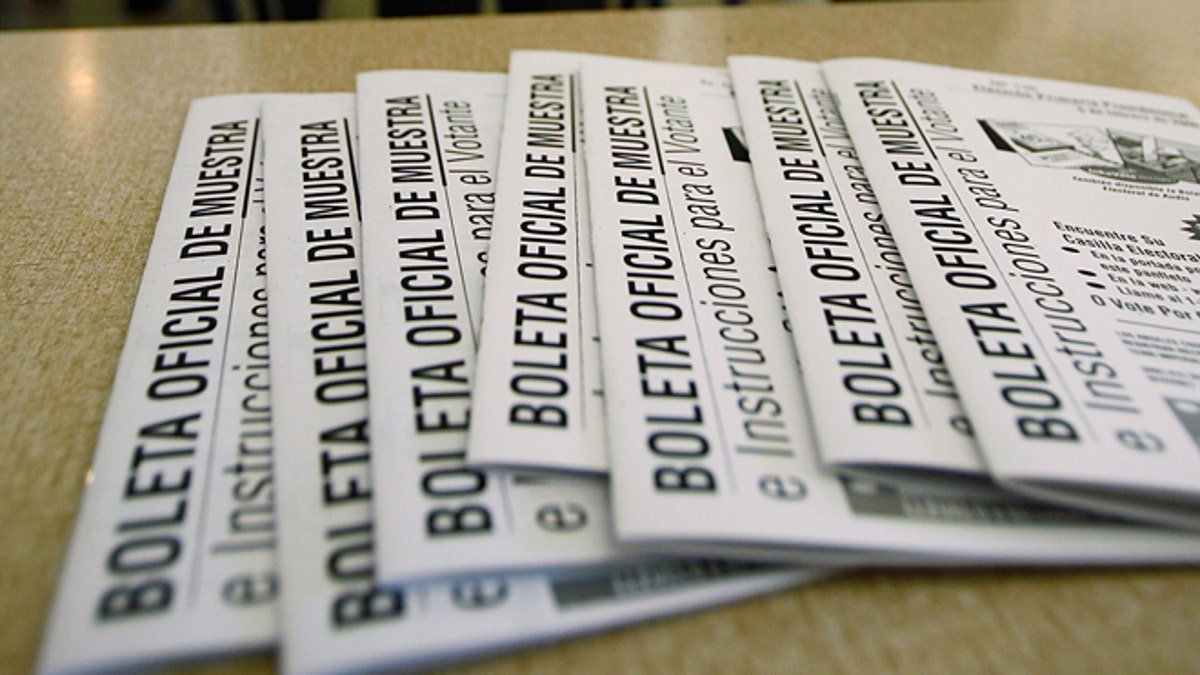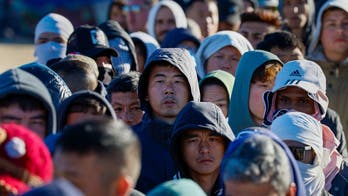
LOS ANGELES, CA - FEBRUARY 05: Voters mark their ballots near Spanish language sample ballots as voters go to the polls for Super Tuesday primaries in the predominantly Latino neighborhood of Boyle Heights on February 5, 2008 in Los Angeles, California. Latinos are an increasingly important factor in California where they are expected to account for 14 percent of the vote and tend to favor presidential hopeful Sen. Hillary Clinton (D-NY) over rival Sen. Barack Obama (D-IL). At 44 million, Latinos make up15 percent of the US population, the nation's largest minority group according to the latest Census Bureau estimates. (Photo by David McNew/Getty Images) (2008 Getty Images)
With 3.2 million Latinos who have or will reach voting age between the 2012 and 2016 elections, millennials will make up almost half of the record 27.3 million eligible Hispanic voters this Election Day, a new report found, but their impact may be limited when it comes to who wins the presidency.
A Pew Research Center report that was embargoed until Tuesday found that Hispanic millennials will account 44 percent of eligible Latino voters this November – a share greater than any other racial or ethnic group of voters. But they aren’t expected to have a major impact come Election Day because voter patterns show they don’t turn out to vote, the report shows.
While there was a great deal of talk about the size of the Hispanic vote in 2012, only 11.2 million voted that year. Historic turnout rates for Latinos have been significantly lower than those of other groups. And even lower when it comes younger Latinos.
In fact, Latino millennials cast ballots less often than non-Latino millennials, who also have poor voter turnout. About 37.8 percent of Latino millennials voted in 2012, compared to 47.5 percent of white millennials and 55 percent of black millennials. The only minority group that had a poorer voting record was Asians, which saw 37.3 percent of millennials turn out to vote four years ago.
The Latino electorate is projected to make up a record 11.9 percent of all U.S. eligible voters in 2016 – close to even with blacks, who will make up 12.4 percent.
Hispanics have historically had a poor voting record – and many do not even register to vote. Only half the eligible Latino millennials were registered to vote in 2012 compared with 61 percent among white millennials and 64 percent among black millennials. Asian-Americans were the only group to have a lower registration rate at 48 percent.
One reason many younger Latinos have not made it to the polls may be that there were only a few states with large concentrations of Hispanics that are considered battleground states. This November, California, New York and Texas are not expected to be toss-ups, which generally draws more voter interest and higher turnouts.
There are some exceptions this year. In the so-called "purple states" of Nevada, Florida and Colorado, Latinos make up more than 14 percent of eligible voters.
Moreso than other voting groups, Latinos in the U.S. generally skew young.
"The median age among the nation’s 35 million U.S.-born Latinos is only 19," the Pew report states, "and the Latino youth will be the main driver of Latino eligible voter growth over the next two decades."
Pew also reported that the growing number of U.S. citizens who are immigrants could help boost the Latino voter turnout rate.
In 2012, 53.6 percent of Latino citizens born outside the U.S. voted – 7.5 percent more than the 46.1 percent voter turnout rate among U.S.-born Latinos. Recent immigrants also voted at a higher rate than U.S.-born Latinos in 2008 – 54.2 to 48.4 percent.
Pew's study found that 1.2 million Latino immigrants have become U.S. citizens since the 2012 election.




